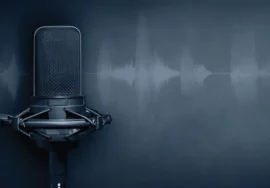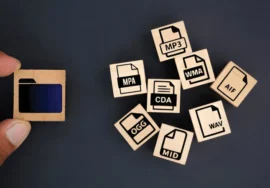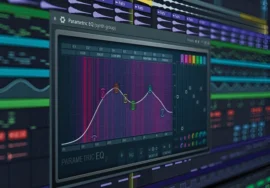
Tired of Audio Noise? Let Us Clean It Up
In today’s fast-paced world, audio noise is an ever-present nuisance. Whether it’s the constant hum of traffic, the chatter of colleagues, or the background noise of electronic devices, these unwanted sounds can disrupt our daily lives and productivity. If you’re tired of being bothered by audio noise, then you’ve come to the right place. Here, we’ll explore the various audio noises, their harmful effects, and effective solutions to clean up your audio environment.
Understanding Audio Noise
Before diving into the solutions, let’s first understand what audio noise is and how it impacts our lives. Audio noise refers to any unwanted sound that interferes with our ability to hear and understand desired sounds. It can be categorized into two main types:
- Ambient noise: This refers to background sounds that are present in our environment, such as traffic, construction, or the hum of machinery.
- Electronic noise: Electronic devices generate this noise and can manifest as hissing, buzzing, or crackling sounds.
Harmful Effects of Audio Noise
Audio noise can have a detrimental impact on our physical and mental well-being. The harmful effects include:
- Hearing loss: Prolonged exposure to loud noise can lead to hearing damage, including tinnitus (ringing in the ears) and hearing loss.
- Stress and anxiety: Noise can elevate stress levels and contribute to feelings of anxiety and irritability.
- Sleep disturbances: Difficulty sleeping is a common consequence of noise pollution, as it can disrupt our sleep cycles and lead to fatigue.
- Reduced productivity: Noise can hinder our ability to concentrate and be productive, especially in work or study environments.
- Communication problems: Noise can make it difficult to communicate with others, leading to misunderstandings and frustration.
Effective Solutions to Clean Up Audio Noise
Now that we understand the harmful effects of audio noise let’s explore effective solutions to clean up your audio environment:
1. Noise-Canceling Headphones and Earplugs:
- Active noise cancelation: These devices use microphones and speakers to detect and counteract ambient noise, creating a quieter listening experience.
- Passive noise cancelation: Earplugs made of foam or silicone can block out external sounds, providing a level of noise reduction.
2. Soundproofing Your Environment:
- Acoustic panels: Installing acoustic panels on walls and ceilings can absorb sound waves and reduce noise transmission.
- Thick curtains and rugs: These materials can help to absorb and dampen sound within a room.
- Weatherstripping and caulking: Sealing gaps and cracks around doors and windows can prevent noise from entering your space.
3. White Noise Machines and Apps:
- Masking noise: White noise machines or apps generate a steady, calming sound that can mask unwanted noises and improve sleep quality.
- Sound therapy: white noise machines offer various sound options, such as natural sounds or binaural beats, which can promote relaxation and focus.
4. Audio Cleaning Software:
- Noise reduction: Specialized software can remove or reduce background noise from audio recordings, making them clearer and easier to listen to.
- Audio restoration: For damaged or degraded audio files, restoration software can help to repair and improve their quality.
5. Personal Noise Management Strategies:
- Mindfulness and relaxation techniques: Practicing mindfulness and relaxation techniques, such as meditation or deep breathing, can help you cope with noise and reduce stress.
- Time management: By planning your activities around quieter times of the day, you can minimize your noise exposure.
- Noise-canceling accessories: Consider using noise-canceling accessories, such as earplugs or headphones, during noisy activities.
6. Community Noise Control:
- Noise ordinances: Advocate for stricter noise ordinances in your community to regulate noise levels from businesses, construction sites, and other sources.
- Noise pollution awareness: Raise awareness about the issue of noise pollution and encourage others to take steps to reduce noise.
7. Noise-Canceling Earbuds:
- Wireless convenience: Wireless noise-canceling earbuds offer a convenient and discreet way to reduce noise in various settings.
- Active and passive noise cancelation: Many earbuds combine active and passive noise cancelation for optimal noise reduction.
8. Noise-Absorbing Materials:
- Furniture and decor: Choose furniture and decor made of materials that absorb sound, such as fabric, wood, or cork.
- Soft surfaces: Carpets, rugs, and curtains can help to absorb and dampen sound within a room.
9. Noise-Reducing Building Materials:
- Construction and renovation: Consider using noise-reducing building materials, such as double-pane windows and sound-insulating insulation, during construction or renovation projects.
10. Noise-Reducing Headphones for Sleeping:
- Comfortable and effective: Specialized noise-canceling headphones designed for sleeping can help you get a restful night’s sleep even in noisy environments.
11. Noise-Reducing Phone Apps:
- White noise and soundscapes: Many phone apps offer a variety of white noise and soundscape options to help you relax and block out unwanted noise.
12. Noise-Reducing Earplugs for Musicians:
- Custom-molded earplugs: Musicians can protect their hearing with custom-molded earplugs that reduce noise while allowing them to hear their instruments.
13. Noise-Reducing Earplugs for Swimmers:
- Waterproof and comfortable: Waterproof noise-reducing earplugs can protect your ears from water and noise while swimming.
14. Noise-Reducing Earplugs for Babies:
- Soft and safe: Soft and safe noise-reducing earplugs for babies can help to protect their delicate ears from loud noises.
15. Noise-Reducing Earplugs for Industrial Workers:
- High-protection earplugs: Industrial workers can protect their hearing with high-protection earplugs that meet specific safety standards.
Conclusion
By incorporating these additional tips into your noise reduction strategies, you can further enhance your audio environment and enjoy a quieter, more peaceful life. Remember, noise pollution is a significant issue that can have lasting consequences on our health and well-being. By taking proactive steps to reduce noise, you can contribute to a healthier and more harmonious community for everyone.





